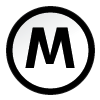Since the 90s I have worked on a variety of projects. I started out when the web was just a thing for browsers on clunky screens and am now working in a world where the web is actually a web, a network of connected devices of all manner of sizes and interactive patterns: a truly connected space that lets you do amazing things on many interfaces. I love to design for all of them, and I love to design things that work on all of those they need to work on. And I have designed for many of those devices.
If you want to know about those projects, feel free to contact me – I like to talk about them, not post.
UX from Ideation to Information Architecture:
Doing research into the motivations and intentions of users is often the first step in determining where to go with an application or site. Using questionnaires, existing feedback or analytic channels or actual field research is a good way to get the insights that can be the basis of your ideation or the initial concept.
This research usually ends up as a list of features, personas, initial sketches or a structural document of the site and the interaction flows.
Research, documentation, ideation and design: all of that, I can do that for you.
Content Strategy
When asked what I do, I usually say UX and Copy. So means that I also deal with the content on the website. One major factor for creating a good IA and ultimately a good UX is getting your content right: knowing what you need and how it needs to be presented.
This is where Content Strategy comes in – whether it is an audit, analysis, strategic outlook or content creation: I can do that for you.
Wireframe
Wireframing is task most associated with UX and IA – it’s where you express the initial design ideas for the requirements and visions laid down in envisioning and through research. They often start as a sketch and work the way to a more detailed, annotated document. Sometimes, that last step is replaced by Agile Methods and Prototyping. But sometimes, wireframes need to go all the way. That, too, I can do for you.
Prototyping
Prototyping is often the fastest and most efficient way to communicate design suggestions once you’ve gone beyond the initial design sketches. For me, basic prototyping is part of the job, on a selection of tools – so yes, I can do that for you.
Usability + UX Testing:
Conducting lab-tests for your site or prototype (or even conceptual scribble) based on important use cases is essential for finding out if your design actually works. Testing that as early and as often as possible is a good way to being reasonably sure that what you are building is going to work for your users.
To that end, I create test guidelines with the necessary use cases, screeners that make sure that you get your target group, and develop or provide the items necessary for testing.
Another way to gain insight into possible Usability or User Experience problems is analyzing usage statistics and taking a quantitative as well as qualitative look at user feedback. This way, you can detect errors in interaction and mental models that lead to usability problems. It is also a way to get some valuable hints as to what features your users actually use or desire. That is why I often work with existing analytics and feedback systems, or help implement those systems, in order to perform that analysis.
So if you need that kind of analysis, I can do that for you.
Agile Development
Delivering documents is one way of getting a job done. But especially designing and developing complex applications, an agile approach has many advantages. I have extensive experience in working in Scrum and an agile start-up. So if you need a UX Consultant in that sort of environment, I can do that for you.
Talk
Communication is key for a successful project. Talking to users as well as to stakeholders, creatives, and those who will ultimately realize the design – the developers – is the only way to get a project launched successfully. So yes, I can do that for you.
Text/Copy
Words are a very important element of the user experience.
- Functional Text / Microcopy: Naming a function, a link, the elements of a drop-down, the areas of your Information Architecture, is central to the usability and the user experience of your site or application.
- Content: Much of the web’s content is still in the form of written text. That text needs to be readable, engaging, factually correct, as well as on brand and allowing search engines to do their job. So sometimes, copy needs to be written or edited to match all those requirements.
Both, I can do for you.
Tools
HTML/CSS/JS (Basic) in Aptana Studio
Balsamiq
Omnigraffle
Visio
Axure (Basic)
Content Inventories
Photoshop
Office (obviously)
Pen & Paper (naturally)
Some thoughts about tools
